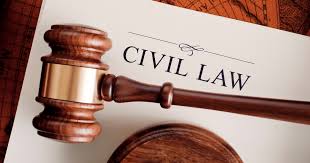Let’s be honest: the thought of writing a resume (résumé) makes most people want to run for the hills. It feels like trying to solve a puzzle where you don’t know what the final picture should look like. You stare at a blank page, wondering, “Where do I even start?”
But what if I told you it doesn’t have to be that hard? A resume is just a story—your professional story—told in a specific, clear format. It’s not about fancy words or confusing layouts. It’s about clear communication. Just a little of your time, and I will show you how.
This article will guide you through the processes. We’ll break it down into simple pieces, one step at a time. By the end, you’ll not only know how to build a resume, but you’ll feel confident doing it. Let’s get started.
What Exactly Is a Resume?
Think of your resume as your professional handshake on paper. It’s a one-to-two-page document that summarizes your:
-
Work history
-
Skills and abilities
-
Education
-
Key achievements
The sole purpose of a resume is to get you an interview. It’s a marketing brochure for you, designed to convince a hiring manager in about 6-7 seconds that you’re worth talking to.
Is a Resume And a CV The Same?
You may also like: How to Write a Winning CV for Your Applications
What Does a Good Resume Look Like?
A good resume isn’t about being creative with fonts and colors. It’s about being clear, professional, and easy to read. Here’s the universal checklist:
-
Clean & Professional Layout: Use a simple font (like Calibri, Arial, or Georgia), clear headings, and plenty of white space. Avoid distracting graphics or loud colors.
-
Consistent Formatting: If you use bold for one job title, bold all of them. The same for dates, locations, and bullet points. Consistency equals professionalism.
-
Error-Free: Zero spelling or grammar mistakes. Read it backwards, use a tool like Grammarly, and have a friend proofread it.
-
Achievement-Oriented: It doesn’t just list duties (“Responsible for customer service”). It highlights achievements (“Increased customer satisfaction scores by 30% through proactive service”).
-
Tailored for the Job: You should tweak your resume for every application to match the keywords and requirements in the job description.
You may also like: Write Recommendation Letters Like a Pro!
The Standard Resume Format
This is the most common and accepted order. Think of it as your recipe.
1. Contact Information of a Resume (top of the list)
-
Full Name (Large, bold font)
-
Phone Number
-
Professional Email Address (e.g., firstname.lastname@gmail.com, NOT casual emails like partydude95@email.com)
-
City, State (Full address is not necessary)
-
LinkedIn Profile URL (Make sure it’s updated!)
2. Resume Professional Summary
-
This is NOT an objective statement (“Seeking a challenging role…”).
-
This IS a powerful snapshot. Who are you professionally? What key skills and experience do you bring?
-
Example: “Detail-oriented marketing graduate with 2+ years of experience in social media management and content creation. Proven ability to grow online engagement and drive campaign metrics.”
3. Work Experience Section of a Resume
-
List in reverse-chronological order (most recent job first).
-
For each job, include:
-
Job Title, Company Name, City, State
-
Dates of Employment (Month, Year – Month, Year)
-
3-5 bullet points describing your accomplishments.
-
The Magic Formula for Bullet Points:
Action Verb + Task + Quantifiable Result
Weak: “Helped with social media.”
Strong: “Managed the company’s Instagram account, increasing follower count by 50% (from 2,000 to 3,000) in six months.”
4. Skills Section of a Resume
-
Group skills into categories if helpful.
-
Hard Skills: Technical abilities (e.g., Microsoft Excel, Python, SEO, QuickBooks, Graphic Design).
-
Soft Skills: Interpersonal abilities (e.g., Communication, Leadership, Problem-Solving, Teamwork).
5. Education Section in a Resume
-
Degree, Major, University Name, City, State, Graduation Year (or expected year).
-
GPA only if it’s strong (above 3.5/4.0).
-
Relevant coursework, honors, or awards can be listed here.
(Optional) Certifications, Projects, or Volunteer Work
-
Include if they are relevant to the job and strengthen your story.
You may also like: Write A Job Application Letter Like a Pro
Tools to Build a Resume Template
You don’t have to build this from scratch in Word. Use these fantastic (and often free) resources to build a compelling resume:
-
Google Docs Resume Templates: Free, professional, and easy to use. Go to Docs > Template Gallery > Resume. Explore here.
-
Canva: Offers beautiful, visual templates. Great for creative fields. Canva Resume Templates.
-
Novorésumé: A smart builder that guides you step-by-step and offers strong ATS-friendly designs. Novorésumé Builder.
-
Kickresume: Another excellent online builder with sample content to inspire you. Kickresume.
Pro Tip: If applying to large companies, save your final resume as a PDF (with a clear name) to preserve formatting. Only send a Word doc if specifically requested.
What to Check Before Sending Your Resume
- Tailored: Did you use keywords from the job description?
- Proofread: Have you and someone else checked for errors?
- Quantified: Did you replace duties with measurable achievements?
- Formatted: Is it clean, consistent, and easy to scan in 7 seconds?
- Honest: Is everything truthful? (This is crucial.)
Write a Resume Like a Pro!
Writing a resume is a skill, and like any skill, it gets easier with a good guide and a little practice. You’re not just listing old jobs; you’re building a case for your future.
Start by just writing down everything—a “brain dump” of all your jobs, tasks, and wins. Then, use the blueprint above to shape that raw material into a powerful, professional document.
Need more help? Dive deeper with these trusted external resources:
-
Harvard University’s Resume & Cover Letter Guide
-
For understanding ATS (Applicant Tracking Systems): Jobscan’s ATS Guide
Stop wrestling the gorilla. Take a deep breath, open a template, and start telling your story. Your next opportunity is waiting.
Did this guide help you see the resume process more clearly? Bookmark this page for reference, and share it with a friend who’s also ready to stop the struggle and start building their career.






